
Around the Bloc: Proud Latvia’s Sorrow Over Meldonium Drug
Baltic republic regrets ban on drug invented by a Latvian: its use has hurt Maria Sharapova’s career.
More...We kindly inform you that, as long as the subject affiliation of our 300.000+ articles is in progress, you might get unsufficient or no results on your third level or second level search. In this case, please broaden your search criteria.

Baltic republic regrets ban on drug invented by a Latvian: its use has hurt Maria Sharapova’s career.
More...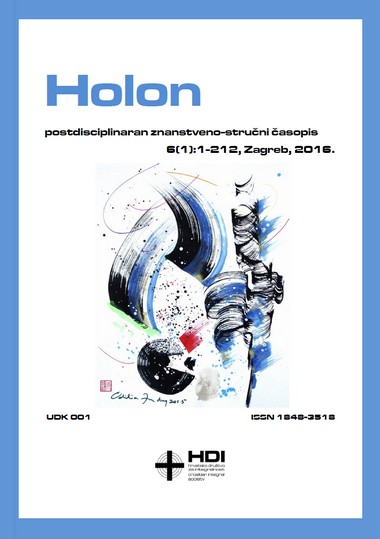
Aim of this paper is to detect and valorize key units of design production in the region of the city of Bihać from the second half of the 20th century, with a particular focus on specific economic and political issues of the socialist system. It is necessary to map design units within singular companies from the socialist period in Bihać and by doing so, to make a dynamic history of production a subject of interdisciplinary research with a goal of enlightening us regarding economical, political, and cultural situation in the wider surroundings. This paper tries to evoke awareness about design production on the case study of Bihać and place it in an adequate social and cultural context of SR Bosnia and Herzegovina and SFR Yugoslavia. The goal is to reconstruct an image of the previous times by focusing on the concrete examples from the leading companies based in the city of Bihać, and emphasizing main actors in the field of design production in mentioned companies. Finally, this paper includes facts which can be used as a starting point for valorization and comparison of general conclusions about the image of design in the area of Bihać. Due to material devastation of the mentioned companies and partly due to war in the nineties, this paper is still limited in offering a deeper and more comprehensive insight into design oeuvre with a final intention of valorizing and cataloging design heritage of this geographical area.
More...
The article outlines economic and social aspects of the textile factory Kombiteks Bihać (Bosnia and Herzegovina), with emphasis on the period of its most important business results in the second half of the 80’s of the 20th century that preceded the collapse of Kombiteks, as well as most other industries in Bosnia and Herzegovina (BiH), and in a significant part of the rest of the former Socialist Federal Republic of Yugoslavia. The article has a preliminary research character. It aims to draw the boundary frames of the theme, and mapped Kombiteks in a broader social, economic, cultural and political landscape of Bihać, Bosnia and Herzegovina, SFR Yugoslavia and beyond. Narrative line of the text is built on two parallel, but closely intertwined levels, following a long period of 35 years, since the start of Kombiteks in the second half of the 50’s to the beginning of the war in Bosnia and Herzegovina in the early 90’s of the 20th century. One level of the article is, therefore, broader contextual, and the second is dedicated to Kombiteks itself. I would like to emphasize with the article, and provide at least a modest contribution, the importance of analysis of the topics in the domains of Yugoslav heritage from political and economic points of view, contrary to identity ethno-political perspectives that have long dominated in the research studies dedicated to the breakup of SFR Yugoslavia and its wars in the 90’s. It is a contribution to a more complex understanding of the recent history of our region, and the SFR Yugoslav experience.
More...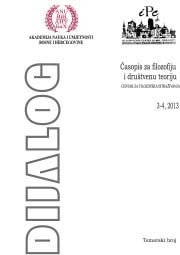
The man is a rational being, but its role is increasing in the area of not only the Earth, but the near universe as well, becoming more pronounced and more important. If, until recently, he could not produce the effects that could be seen from space, the modern era has opened up about that possibility as well. The melting ice cover, forest fires, especially armed conflicts, atomic weapons probes, and certainly other types of weapons that interfere with well-established principles of nature are now more than obvious. The man increasingly feels like a ruler, like “the master of nature”. If something is understood as external law unwinding certain phenomena, can we say that we know and the occurrence itself. If we found a curtain over the atoms using the most accurate microscope available, can we say that we have mastered all the secrets of the atom or the infinity of the universe? The arrogance of man was visible immediately after he, or his social group, feel independent. Then comes the competition about merit, and it produces the illusion of progress. The entire previous history is the history of the various conflicts and manifestations of violence.
More...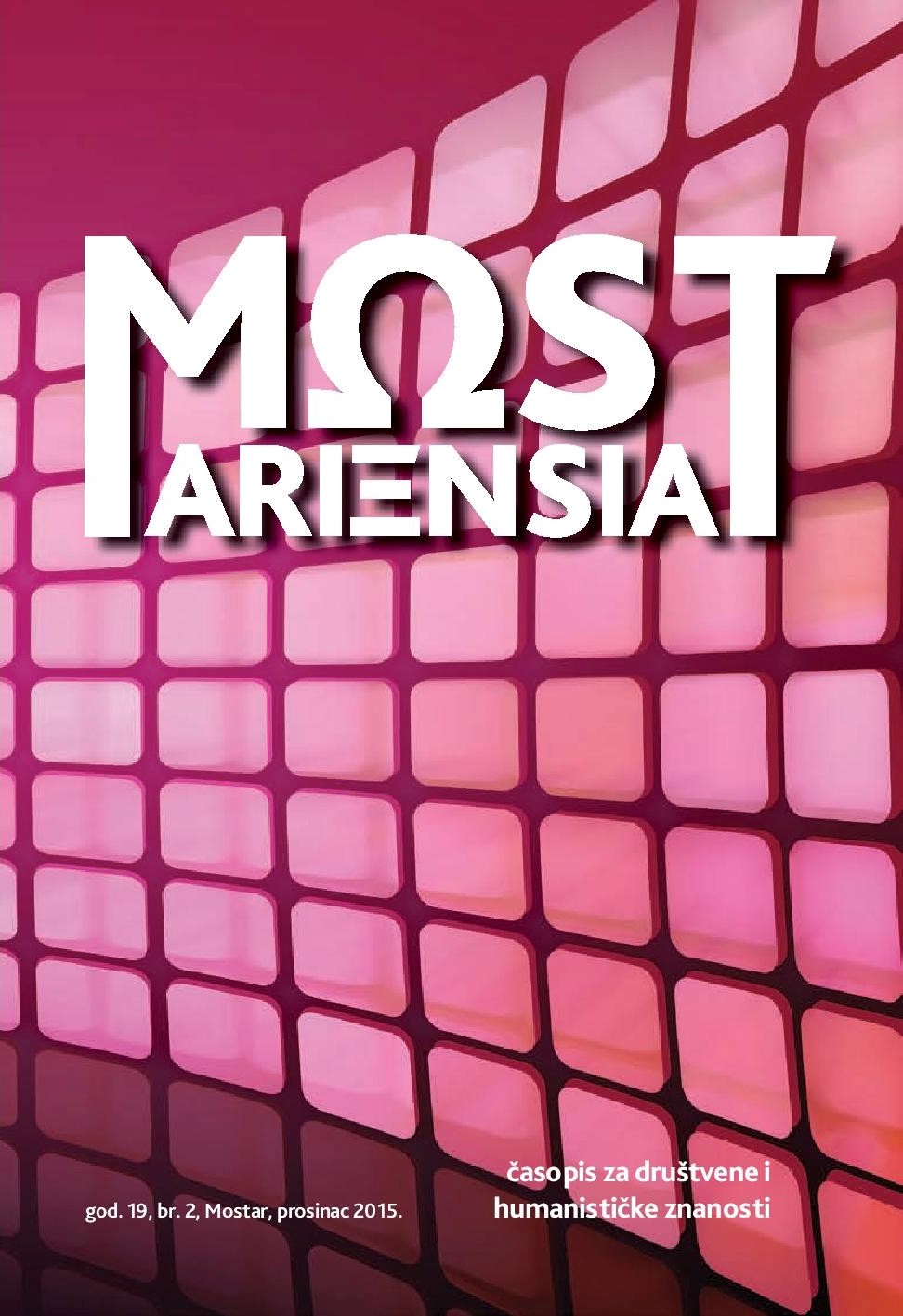
Taking into consideration that humanity’s greatest achievements have been accomplished through projects in all areas of its activity, which, therefore, made its impact on the global environment increasingly negative, the state members of European Union have introduced the legislature to regulate environmental protection, stipulating thus numerous environmental laws and project related regulations. The paper, however, refers to several legal provisions important for environmental protection, such as directives on, so called, horizontal legislation as a part of EU legislation.This covers integration of environmental protection into all economic sectors, strategic assessment of plans and programs, assessment of project impact on environment, access to information and reporting on the implementation of directives on the environment. The environment protection legislation which regulates such projects significantly changes the understanding of project management. Consequently, the necessity of constant adapt existing models of project management to the newly emerging conditions, including legal regulations as a control instrument of environmental protection, is highly emphasized.
More...
The paper gives an overview of the centuries-old tradition of voluntary service associations for the protection of natural and cultural heritage of the United Kingdom of Great Britain and Northern Ireland. The founders of the presented associations have invested their free time, energy, as well as their own financial resources to protect their heritage. It is this philanthropic and voluntary aspect of their work that has contributed to the long-term survival of these associations and helped them gain the confidence of people. Therefore, the number of their members has been constantly increasing, and they have been receiving growing financial resources through donations. Volunteers undertake a wide spectrum of activities, ranging from the management of heritage areas to their restoration and maintenance, from monitoring the implementation of plans and laws to the initiation of adoption of new laws or amendments to deficient laws. They organize fundraising,purchase areas which should be protected, organize the management and presentation of heritage,and design educational activities for a variety of visitors. The model that these institutions have applied for many years is something we should seek to apply in other countries, such as Croatia, who are trying to invest in higher quality tourism development. The improvement of cultural tourism and tourism culture is the only safe way to promote a sustainable development of this industry, if we wish to minimise the negative elements it entails.
More...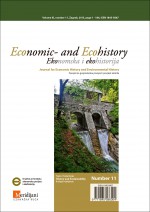
Low coral islands in the Pacific are often perceived as marginal habitats for human settlement. This view is supported by the small and fragmented islet landmass, poor soils, lack of perennial surface fresh water, and extreme vulnerability to flooding by storm waves, and more recently, rising sea-level attributed to global warming. The atolls and table reefs of Kiribati and the Marshall Islands have produced some of the earliest dates for human settlement of eastern Micronesia. Sustainability for the last 2,000 years was just as likely the result of relatively low population densities, low impact extractive technologies, and efficient use of limited resources, as the application of intentional and unintentional conservation practices.
More...
The earth has existed for 4.54 billion years; biologically modern humans have been around for only 200,000 years. 99.9% of the entire time earth has existed, it existed without modern humans. In the mere 200 years of industrialized capitalism our species has developed into a threat to the life-sustaining systems of our planet. Writing law and forming governing institutions adequate to confront this crisis is a daunting task that demands international legal regimes based in an emergent theory of human species-governance that acknowledges the rights of the living earth. This essay examines how existing environmental governance is plagued by weaknesses and coopted by neo-liberalism. A number of environmentally dedicated individuals have charted pathways forward, but we do not yet have a coherent edifice of policy and practices that will solve the environmental crisis. The promising emergent link between environmental law and human rights requires leverage from a richer conceptualization of the environment to deliver effective environmental governance. The difficult task ahead of us is to develop law that recognizes the rights of evolved life on earth and that vests humans with the responsibility to respect and protect the evolved world.
More...
This paper examines the challenges Laimbwe people face in utilizing resources in the Kom/Wum Forest Reserve in Cameroon for their livelihood. The reserve was created in 1951 and since then movement into and exploitation of resources therein was regulated by forest guards and those who went ahead to do so were punished. The increase in the population of the villages in and around the reserve has forced many to venture into the forest to sustain life. This illegal encroachment for food and shelter has led to rapid deforestation and created more conflicts between the users of the forest and officials of the Ministry of Forestry and Wildlife in Cameroon. The government seeks sustainable use of the forest and its resources for the benefit of the nation, the local population, and other stakeholders in the forest sector.
More...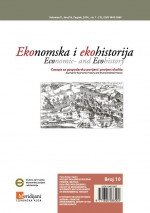
In this paper we will outline three time periods through which we will describe the main developmental processes in formation of civil society and environmental movement in Croatia. In the first part of paper we will describe beginnings of civil society formation in Croatia still being a member of Federal Republic of Yugoslavia. Awareness of environmental problems in Croatia and Yugoslavia appeared relatively early, during ‘70 (last century), not lagging much behind the developed countries, but still in a quite smaller extent. Reactions of the system regarding warnings about environmental deterioration and pollution coming from below have been restricting and civil society had limited impact. As the political system changed, and as Croatia gained independence, new processes are appearing on the civil society scene. In second part of paper we will describe development and change of non-governmental organizations / environmental movement in the period from 1990 till today. Over past 25 years number and profile of environmental NGOs in Croatia has changed constantly in number and character, but in last couple of years the civil society ‘scene’ has stabilized and matured. In third part of paper we will outline the state and profile of environmental non-governmental organizations in Croatia in 2014. Then we will adress most recent relevant surveys, Sustainability Index of civil society orgnizations and Civil society index, and we will outline the part of qualitative research that refers to the sectoral perception of environmetal NGO-s. Finally we will concludeabout the state and direction of environmental organizations development in Croatia.Regarding the later we can speak of well-formed and developed environmental movement in Croatia, although not mass and large-scaled. The state of environmental organizations is improved in almost every aspect, except in financial segment regard in the economic crisis. Nontheless, dispite the improvments in public perception, environmental organizations are still not recognized as equal partner by the policy and private sector.
More...
The article elaborates the position and the role of ecofeminism in the Republic of Croatia whereat ecofeminism is being analysed as holistic and layered context, circuit that is composed of different theoretical positions, forms of activism and different ways of life, oriented by specific life philosophies and spirituality forms. For the purpose of better and complex insight in ‘The Power and Promise’ of ecofeminism (Karen Warren), the author of the article has organized two focus groups which displayed that ecofeminism is not visible in the Croatian academic society as well as there is no existence of ecofeminist movement in the Republic of Croatia. It was also revealed that individuals with academic, activist and personal affinity for ecofeminist idea are trying to apply these ideas in daily life, which for some participants include spiritual practices close to ecofeminism as well. The ecofeminist dialogue have opened and set out a various issues concerning: an academic attitude toward critical theories and alternative knowledge; the position of feminism and its different variations that have been articulated on the activist scene; contemporary and future problems on the Croatian activist scene; issues regarding identity strategies; alternative religiosity and, ultimately, the future of ecofeminism itself within Croatia.
More...
The paper discusses development and transformation of the landscape influenced by contemporary modernization in three settlements of the Šibenik hinterland – Danilo Biranj, Danilo and Danilo Kraljice. At first, basic demographic features were analyzed that show gradual population decline and abandonment of agriculture in the second half of 20th century. Afterwards, the development and transformation of settlements affected by the construction of basic communal infrastructure and other objects was examined. The second segment of the transformation that is related to changes in the use of agricultural land was researched according to data from four periods; half of the 19th century, early and mid-20th century, and the beginning of the 21st century. Analysis showed that the land was most intensively used in the first half of the 20th century and the least intensively at the beginning of the 21st century. Conclusively, the current landscape of Danilsko polje settlements is mostly rural landscape with a sub-sample of the agrarian landscape and a smaller number of technical (industrial) landscape samples.
More...
Analisyng the historical attestations of toponyms on the island of Pag, and using a interdisciplinary approach, the author is concerned with historical relations of the islanders with their environment. By using a wide variety of interdisciplinary methods and approaches of history, onomastics, archeology, geography and other related sciencies and humanities concerned with the historical environment, it is possible to satisfactingly explore how the inhabitants relate to and interact with the natural world around them. The main purpose of the research is to point out the environmental features of the island of Pag in medieval and early modern times. The methodology used involved historical attestations of Pag’s toponymy aswell as closely analised historical kontext and relations between the people of Pag and their environment. Mostly by using the histotrical sources, and (on a smaller scale) fieldwork, the author has allocated several important environmental features which had immense impact on the historical development of the island of Pag. Firstly, one must mention sea salt, the most important medieval and early modern export product. Shipbuilding, seamanship and maritime trade are very important economic activities in the history and economy of every island. The historical sources and attestations of toponyms validate these assumptions. In historical sources one can find numerous toponyms whose motivation for naming we can relate to woods, forest, or shrubs. The question is: was the island of Pag in medieval and early modern times covered with rich forests, or do the numerous toponyms whose naming motivation we connect to woods and forests prove otherwise? Another important feature of the island of Pag is bura. Bura is a cold, northernly wind which often bring salty rain and even snow. Many toponyms on the island of Pag were motivated by it. Doubtlesly, bura is the most important natural facilitator of deforestation. The last feature that is being depicted in the article is water. Modern geographical and geological research showed us that one could fing fresh water springs, puddles, and other refferents connected with water all over Pag. Once again the historical attestations confirmed the hypothesis, together with geological data, forcing us to conclude that the island of Pag had always been rich with fresh water.
More...
In general, conflicts between the official-scientific and traditional knowledge were generated by unfamiliarity with resources, lack of forestry education and illiteracy. Traditional knowledge is more typical of the rural Romanian population, while Saxons and Hungarians proved more receptive to innovations and ready to adapt to new realities. From a historical perspective, the research can provide new examples of the management, surveillance, conservation as well as the rational exploitation of forest resources by means of juridical measures and their application in forestry; it can critically analyze these measures and propose the adaptation of certain solutions to the changing requirements of contemporary life; it can follow the geographical extent of these measures in other parts of Europe from a diachronic perspective, by analyzing the jurisdiction of forest ranges in the Habsburg Empire. The research findings can progressively and regressively indicate the way in which the centrally-imposed forest management measures influenced the periphery in terms of monitoring the exploitation of forest resources and ensuring the conservation of forests through direct and indirect measures.
More...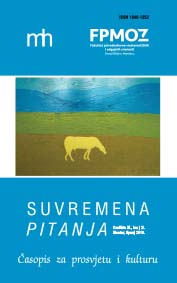
Acquis communautaire in the domain of environmental protection is a body of legal documents, which the EU uses and which impose obligations on national legislatures. Today it numbers more than 300 legislative acts divided into 11 sub-sectors representing different spheres of environment management. For each country, including B&H as a potential candidate for the accession to the EU, an efficient establishment of an institutional system of environmental protection at all administrative levels is of exceptional importance. All this requires numerous activities related to the process of the accession to the EU, which will bring about many changes in the national legislation. The conditions and the mode of accepting and implementing the EU acquis constitute the topics of the negotiations on the EU membership, and environment is one of the chapters in these negotiations. The presupposition for a successful approximation of national legislations to the European ones in the area of environmental protection is certainly a good knowledge of the role and importance of EU institutions competent for the enactment of legal regulations and the acquis in this domain. Therefore, this paper gives a brief presentation of the EU institutions competent for the passage of regulations in the area of the environmental protection, then of the basic decision-making procedure in their enactment, of the goals and principles of the EU environmental policy, of the action programs, of the EU Strategy for smart growth and sustainable and inclusive development and of the EU acquis, especially in the domain of the environmental protection, with an emphasis on its transposition into the legislation of the Federation B&H.
More...
Човјек је од искона био везан за шуму. Шума је колијевка и прапостојбина човјека, његово склониште, складиште хране. Лов и риболов су били прве привредне гране с којима је остајао и опстајао. Сојенице, прве прављене куће, су грађене од дрвета, као и прва оружја (копља) и оруђа (дрвено рало и дрвени точак). Укупно вредновање шума није нигдје, нико никада извршио и тешко ће ико игдје икада то учинити, због сложених и огромних, видљивих и невидљивих улога које шума има. Ради лакшег схватања вриједности шуме се дијеле у пет основних група: еколошке, економске, заштитне, здравствене, естетске и педагошке. Еколошки значај шуме је њен примарни значај. Шуме су најбогатији екосистеми животом који у њој буја, бруји и струји као у кош- ници. Шумска простирка (шушањ или стеља) веома је богата бактеријама, гљивама, праживотињама, лишајевима, маховинама, глистама које органску материју претварају у неорганску. Шума ја највећа ризница биолошке разно- врсности (биодиверзитета).
More...
Eurostat survey shows positive correlation between age and obesity, and a drop in obesity as education levels increase.
More...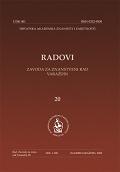
As a conditionally renewable natural resource, the soil has a crucial impact on the sustainable development of the world economy, in particular sustainable agriculture and environmental protection. More than all other we need a Croatian agricultural policy as result of the consensus among all public options, without which there is no the harmonious and sustainable development of the Croatian economy, nor overcome the economic crisis. CAP (Common Agricultural Policy) is a document which obliges all member states of EU, and hence Croatia, including Varaždin county is created according of MFCAL (Multifuncti-onal Character of Agriculture and Land) concept. The MFCAL concept opens the way to land management system and adaptive agriculture, which means the rejection of stereotypes and adaptation to agro ecological conditions of agricultural regions and narrower growing areas, soil type, and strong reaffirmation of crop rotation. The paper describes current situation and the most important features of the distribution of soils and indicate measures of soil amelioration and soil protection in the Varaždin County. Soil are formed on four groups of parent substrates: calcareous (marl, calcareous sand, soft limestone, calcareous fluvial deposits), silicious-calcareous (loess, pleistocene glacial loams), silicious (acidic fluvial deposits of sand and gravel, metamorphic rocks) and Mesozoic limestones and dolomites. All substrates are mixed by erosion, landslides, fluvial transfer and chaotic overlap each other. A prerequisite of any progress in agriculture of Varazdin county is land consolidation of land parcels and thereafter in the area of mild, especially the steep slope parcel routing and long rows perpendicular to the slope, means contour. The sequence of factors limit soil for crop growing is: soil acidity > drought during the growing season > high groundwater level > soil erosion > low humus content and quality. Consequently, the sequence of soil amelioration practices of agricultural land is: liming > irrigation > drainage. Liming and irrigation paves the way of progress agriculture Varazdin county changing structure of farming , the inclusion of attractive market crops, especially vegetables as second crops, for which there are very favorable conditions
More...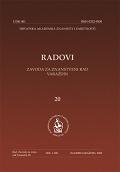
As an analysis of the data from the existing strategic and planning documents of Republic of Croatia and regional governments, this paper presents the first ever published systematization of potentials in health tourism of Hrvatsko zagorje as the region with the longest tradition and highly acknowledged quality in providing health services in the Croatian tourism, and of Međimurje, as a pioneer in this form of tourism with one of the greatest development perspectives in continental Croatia. By examining unexploited sites in the counties of Krapina- Zagorje, Međimurje and Varaždin, suitable for the construction of new facilities for health tourism purposes, and highlighting their strengths and perspectives, the author has developed a foundation to guide policy-development of tourism and health care system in this part of the Republic of Croatia positioning Hrvatsko zagorje and Međimurje as thermal-tourism brands dominant in the national and competitive in international trade frame.
More...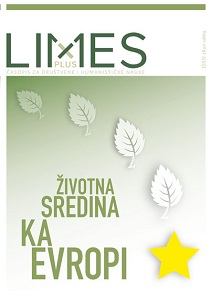
This paper is a short review of possible waste treatments with energy reuse and presents plasma technology, currently the most sophisticated technological solution for the waste treatment. The paper is based on the operating experience from the developed countries and the results of the existing research. Serbia will have big requests in future, regarding the integrations in the European Union and national strategic milestones. The conclusion of this review stresses that we should give the special attention to plasma technology, since the biggest disadvantage of this technology in the past, huge investment, has been solved with new achievements.
More...